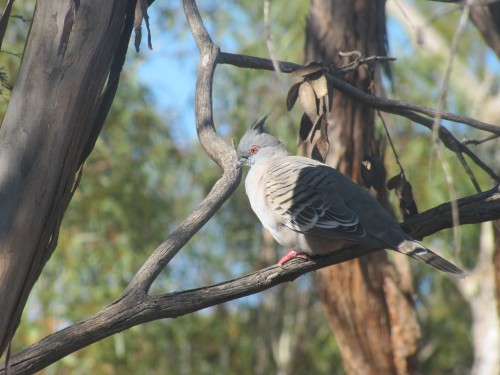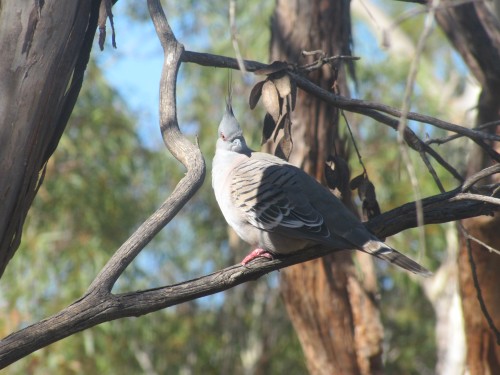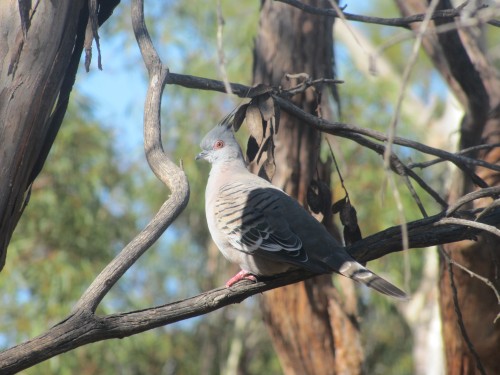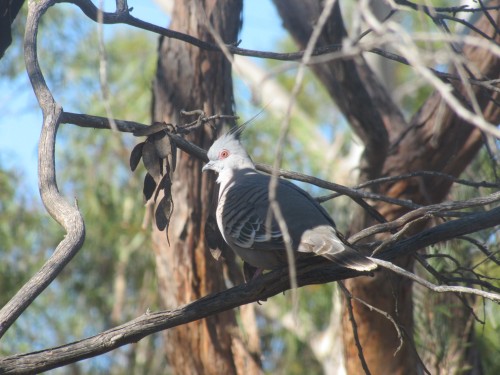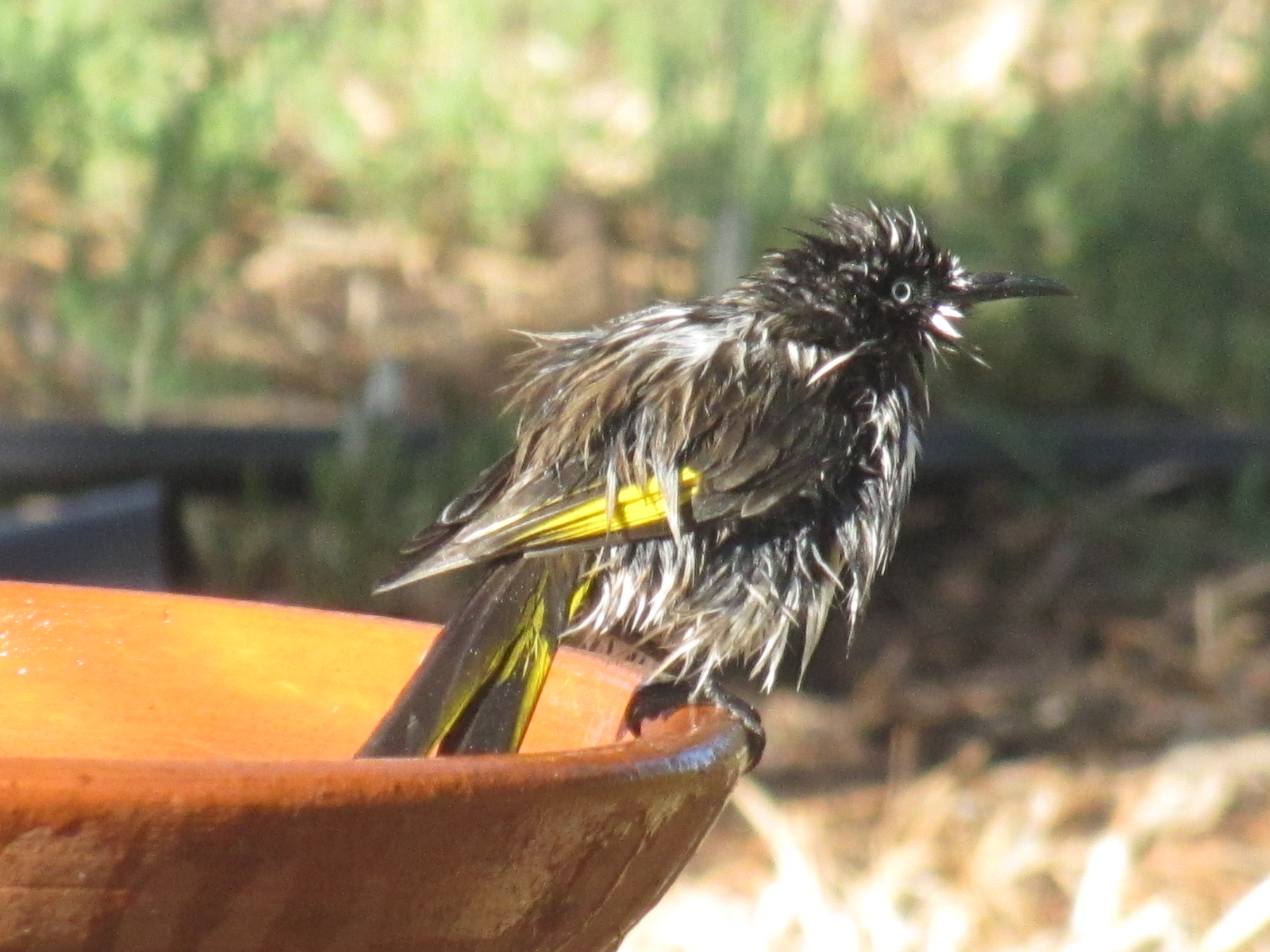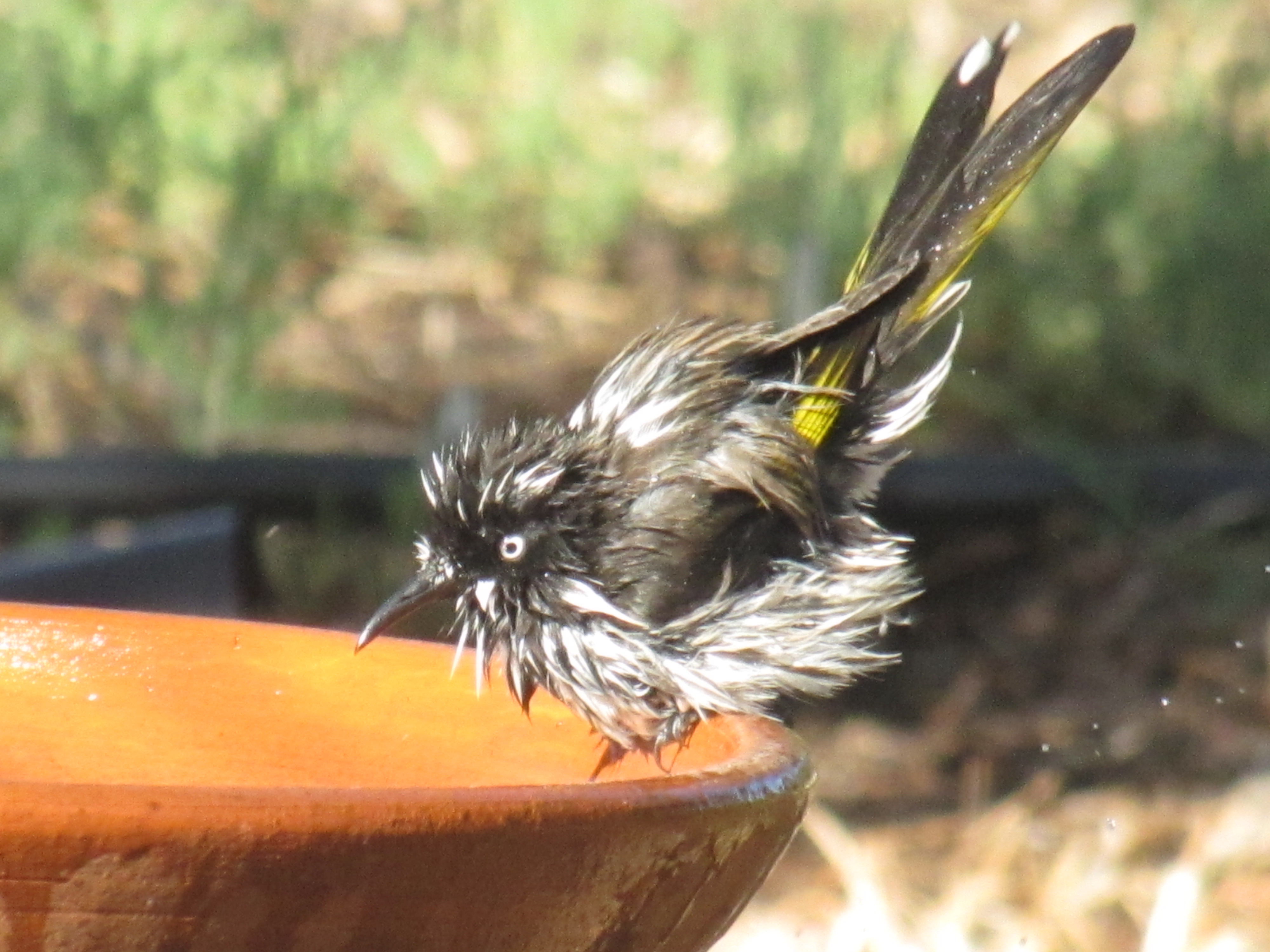Crested Pigeon up close
The Crested Pigeon is a common species in our garden and on our 5 acre block of land in Murray Bridge, South Australia. We see them every day and they seem to be breeding throughout the year. I have found numerous nests over the time we have lived here. They are one of our many resident breeding species.
Individual birds like that shown in today’s photos frequently come to one of our bird baths to drink. Sometimes two or three will come together. During the hot weather of summer, when the temperatures can soar to 35C or above – as high as 46C – many birds come to the water throughout the day, some bathing, some drinking and many doing both.
I managed to get a series of about a dozen good close-up photos of one bird recently. It is times like this that I really appreciate having a 20x zoom facility on my camera.
Let’s all have a morning bath
Earlier this week it was rather warm. On most days we have some birds come to either have a bath, or have a drink. Many do both. Some just sit in the water, especially on very hot days.
On Tuesday of this week I was amazed at the procession of birds coming to drink and bathe. I was having my breakfast and it wasn’t yet very hot. This following is a list of species observed in a ten minute period:
New Holland Honeyeaters – about 12
White-plumed Honeyeaters – 2
Singing Honeyeaters – 2
Red Wattlebirds – 2
Crested Pigeon – 1
Spotted Turtledove – 1
Yellow Thornbill – 1
House sparrow – 10
Common Starling – 6
Australian Magpie Lark – 1
Superb fairy-wren – 3
Other species nearby:
Australian Magpie
White-browed Babblers
Willie Wagtail
The New Holland Honeyeaters caused the greatest kerfuffle; water went absolutely everywhere. I managed to capture this series of photos of one individual getting totally soaked.
Now I’ll have to get a bucket of rainwater and refill the bird bath.
Some of the photos shown here on Trevor’s Birding can now be purchased on tee shirts, coffee mugs, stationary and a large range of other items. Go to Trevor’s Photos site here.
Spotted Turtledove drops by
We have recorded over 100 species in our garden over the last 28 years. Of these, more than 40 could be regarded as resident breeding species.
One of the resident breeding birds is the introduced Spotted Turtledove. In some parts of urban Australia, this species is so common it is regarded as a pest species. In our garden, however, we only have a handful – perhaps 3 or 4 – at any one time.
They’ve been rather quiet over the last month or so; their incessant cooing can drive one to distraction if you are trying to concentrate, or have a headache. I haven’t searched the garden but they may well have been keeping quiet while they nested.
While having breakfast this morning this individual came to visit the bird bath just outside the sun room. This is a flighty, easily scared species, so it was good to get a close-up photo.
Some of the photos shown here on Trevor’s Birding can now be purchased on tee shirts, coffee mugs, stationary and a large range of other items. Go to Trevor’s Photos site here.
Beautiful Superb Fairy-wren
This morning I was sitting in our sun room doing some reading. I looked up and saw the male Superb Fairy-wren shown above and grabbed the camera before it flitted off into the vegetation. I had to take about four steps to get the camera and I was delighted that the bird stayed in position until I could focus and shoot. I only had time to manage one photo, but I’m quite happy with it. This species – like all of our wrens – are very flighty birds, never staying in one spot for more than a second or two – at best.
This individual, along with two uncoloured birds, has been resident in our garden now for over a year. This is delightful because, until a year ago, we had only recorded this species on a handful of occasions over the previous 28 years, despite them being common in our region. My next challenge is to get a shot of a female, preferably alongside the male.
The flowers belong to a Melaleuca lanceolata bush in our garden. It’s a common plant species in our area. For more about Australian native plants, have a look at my wife’s site, Mallee Native Plants.
My readers might like to also see photos of the Red-backed Fairy-wren over at Snail’s Eye View. This is one species I still have the delight to see in the wild.
Some of the photos shown here on Trevor’s Birding can now be purchased on tee shirts, coffee mugs, stationary and a large range of other items. Go to Trevor’s Photos site here.
